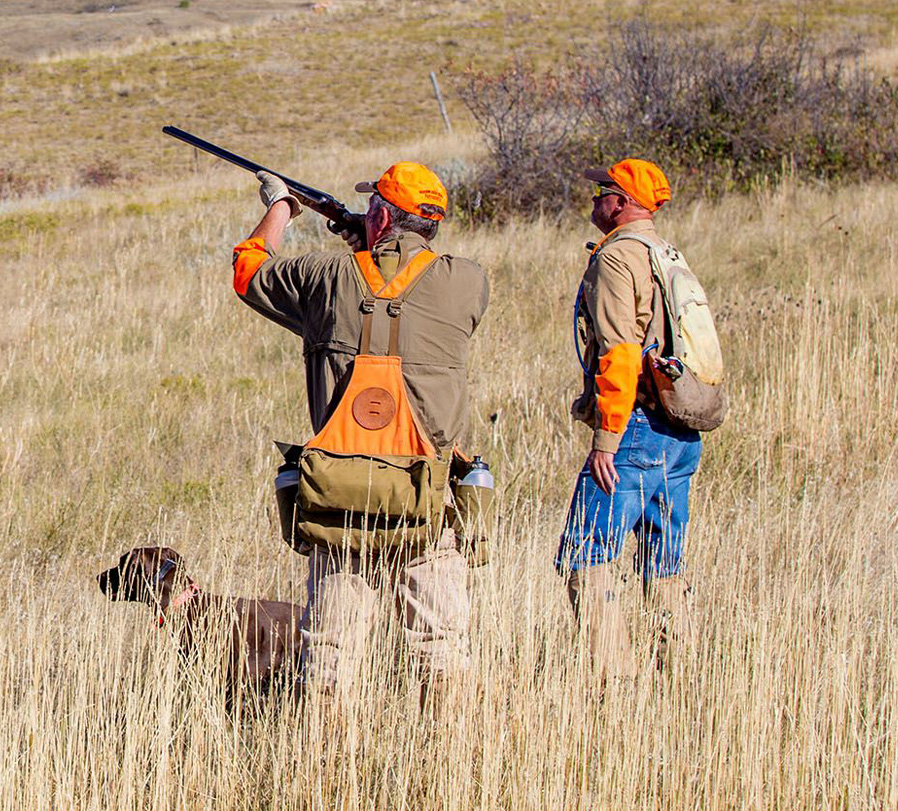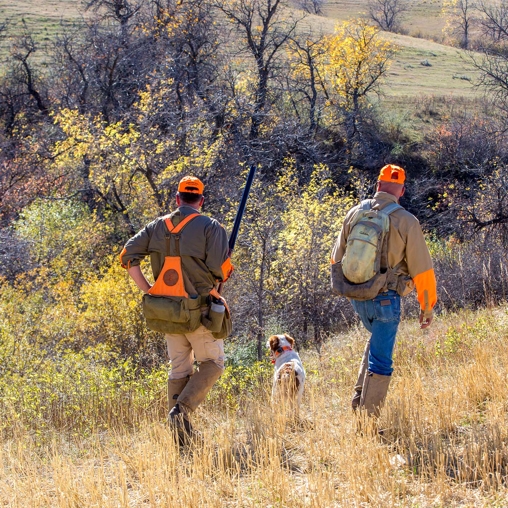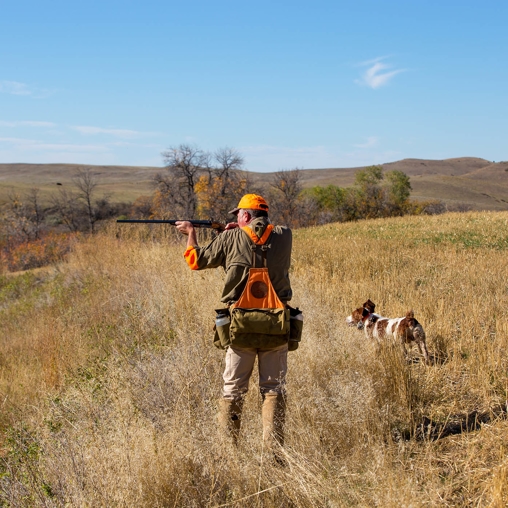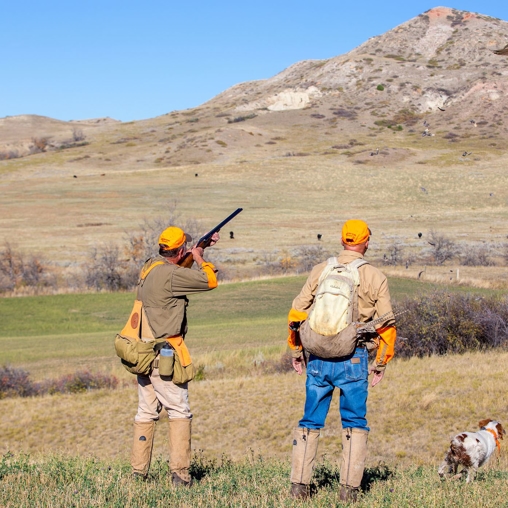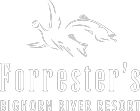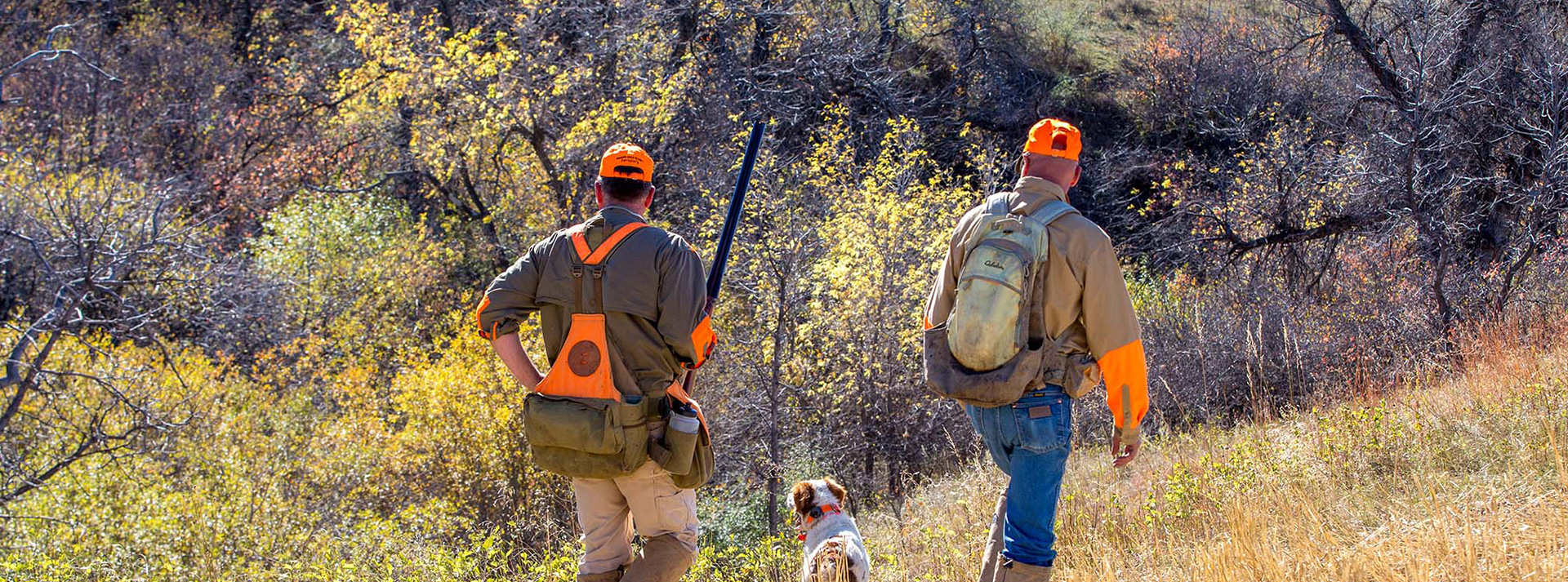
Hunting Resort In Montana
An Authentic, Unparalleled Experience of Land & Game
Montana, renowned for its vast landscapes and diverse wildlife, offers a haven for upland bird hunters. Forrester’s Bighorn River Resort provides an exceptional opportunity to experience the thrill of hunting these elusive creatures. With its prime location and expert guides, the resort ensures a memorable hunting adventure.
Contact Forrester’s Bighorn River Resort today to book your stay and learn more about our hunting resort In Montana.
Upland Bird Hunting
Exclusive Access in the Bighorn River Valley
Thousands of acres of wheat fields, grasslands and coulees are reserved for the exclusive access of the guests of Forrester’s Bighorn River Resort and luxury lodge.
This is prime Montana upland bird hunting territory is designed for:
- Ringneck Pheasant hunting
- Hungarian Partridge hunting
- And Sharptail Grouse hunting
Here at our premier Montana hunting resort, you’ll find we provide unmatched opportunities to enjoy bird hunting, which is fast becoming one of the most popular of all sporting pursuits.
The irresistible combination of working alongside:
- A trained gundog
- Participation in conservation programs
- And scouting upland bird habitats
all add to the excitement as preparation for a day in the field are made. We encourage you to contact us prior to your visit with any questions you may have regarding gear.
Our experienced Bighorn resort hunting guides have been hunting for years and are ready to share their advice and tips.
Forrester's Bighorn River Resort: A Hunter's Paradise
For those seeking a truly world-class hunting adventure, Forrester's Bighorn River Resort stands as a premier destination, combining exceptional hunting with luxurious accommodations and impeccable service. Our Montana resort is not just a place to stay; it's an immersive hunting lodge designed to cater to every aspect of your upland bird adventure. Nestled in the breathtaking landscape near the Bighorn River, the resort offers thousands of acres of prime hunting ground, including private lands teeming with game.
Forrester's Bighorn River Resort offers a truly exceptional upland bird hunting experience in the heart of Montana. With abundant bird populations, expert guides, world-class lodging, and unparalleled service, it's a destination that promises to create lasting memories. Whether you're a seasoned hunter or looking to experience the thrill of upland hunting for the first time, Forrester's Bighorn River Resort provides the ideal setting for an unforgettable adventure. Book your trip today and discover why so many hunters return year after year to this Montana gem.
Book your stay at Forrester’s Bighorn River Resort now. Call (406) 333-1449 now.
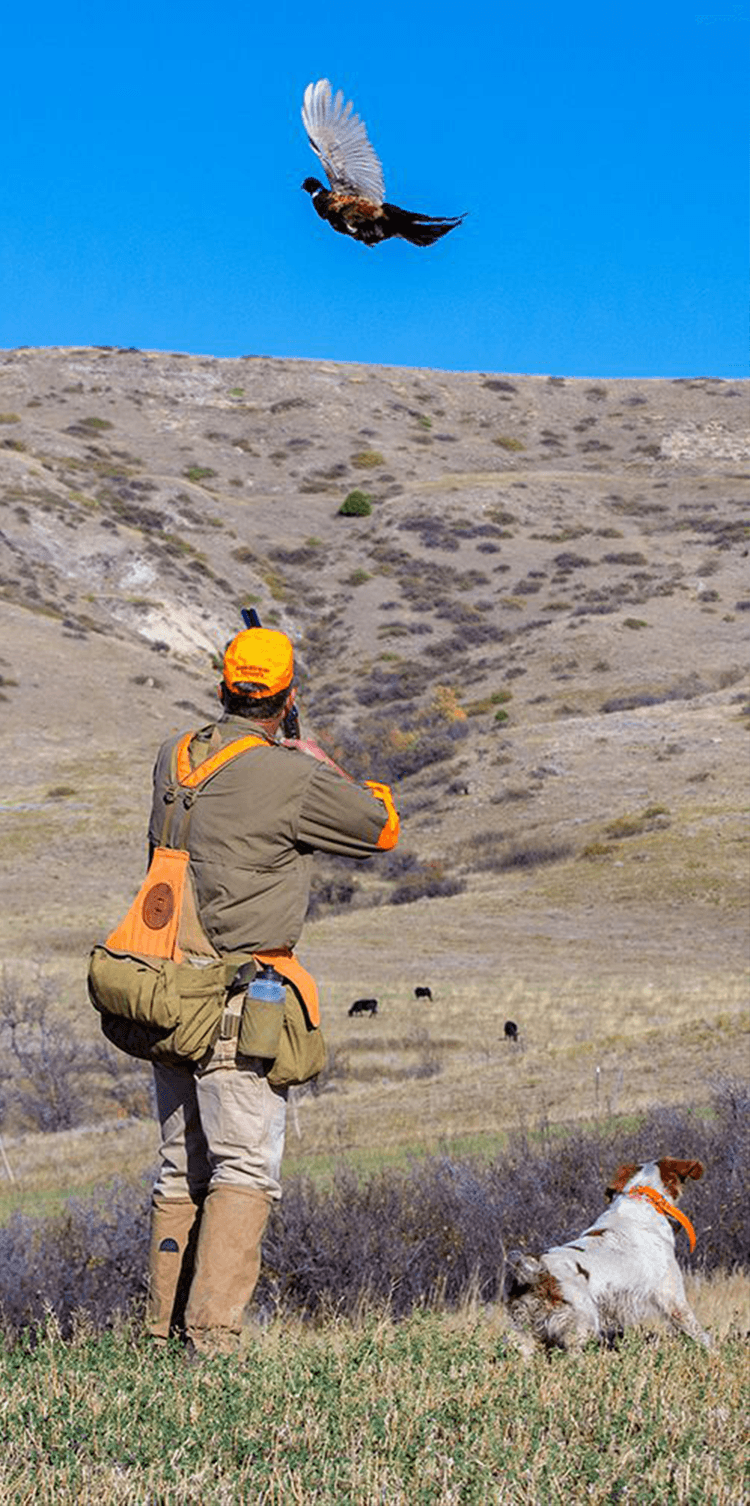
Montana Upland Game Bird Information
Ringneck Pheasant
In the realm of pheasant hunting, The Ringneck Pheasant is perhaps the most common and well-known game bird in the world.
With an estimated 50 million pheasants existing around the world, pheasant hunting is very popular, and Bighorn pheasant hunting is some of the best around.
Ringneck Pheasants cover the most diverse habitat of all pheasant species and can be found in over 30 of the lower 48 states. Like most birds and other animals, it lives a predictable life and follows a normal routine throughout the day.
The Ringneck Pheasant prefers to roost in areas free of overhead cover so it can quickly escape if a predator approaches it.
The most suitable roost areas for pheasant hunting include:
- Stubble fields
- Moist grassy swales
- Other spots with thick, low cover
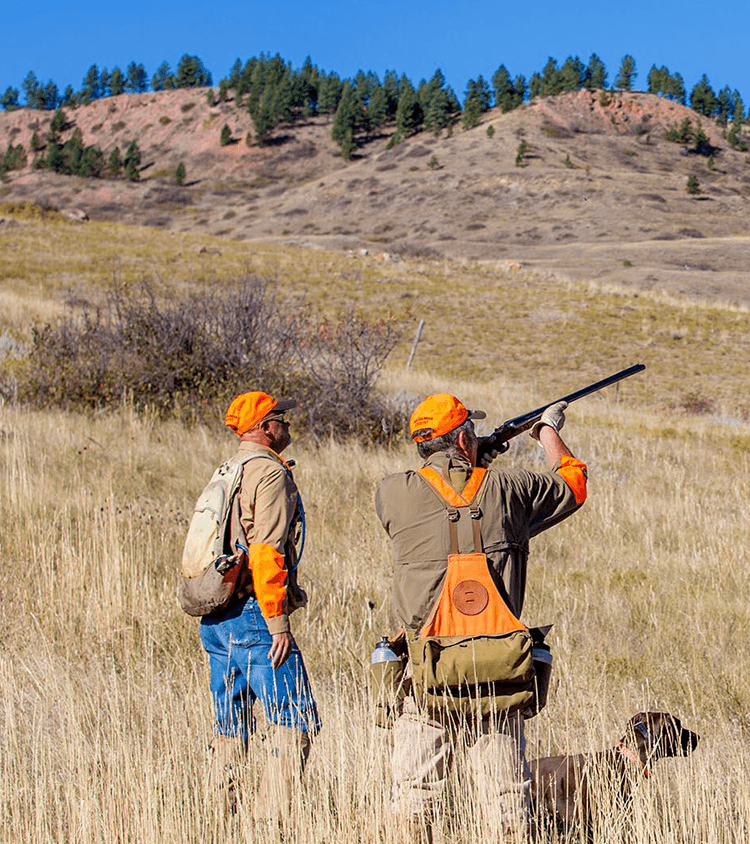
Days Spent with Hunting’s Finest
The upland bird hunting at Forrester’s Bighorn River Resort is made all that much better by who you share it with. Our Orvis-endorsed professional hunting guides are not only consummate hunting guides but represent three generations of Crow Indians as well.
Their devotion and unparalleled knowledge of the land and game you pursue will create a memorable and rewarding Bighorn bird hunting experience.
Likewise our kennel of trained Labs, Pointers and Brittanies are notable accomplices to a memorable day of Bighorn bird hunting. Working thousands of acres of bird cover they will make sure to put up plump birds all day long.
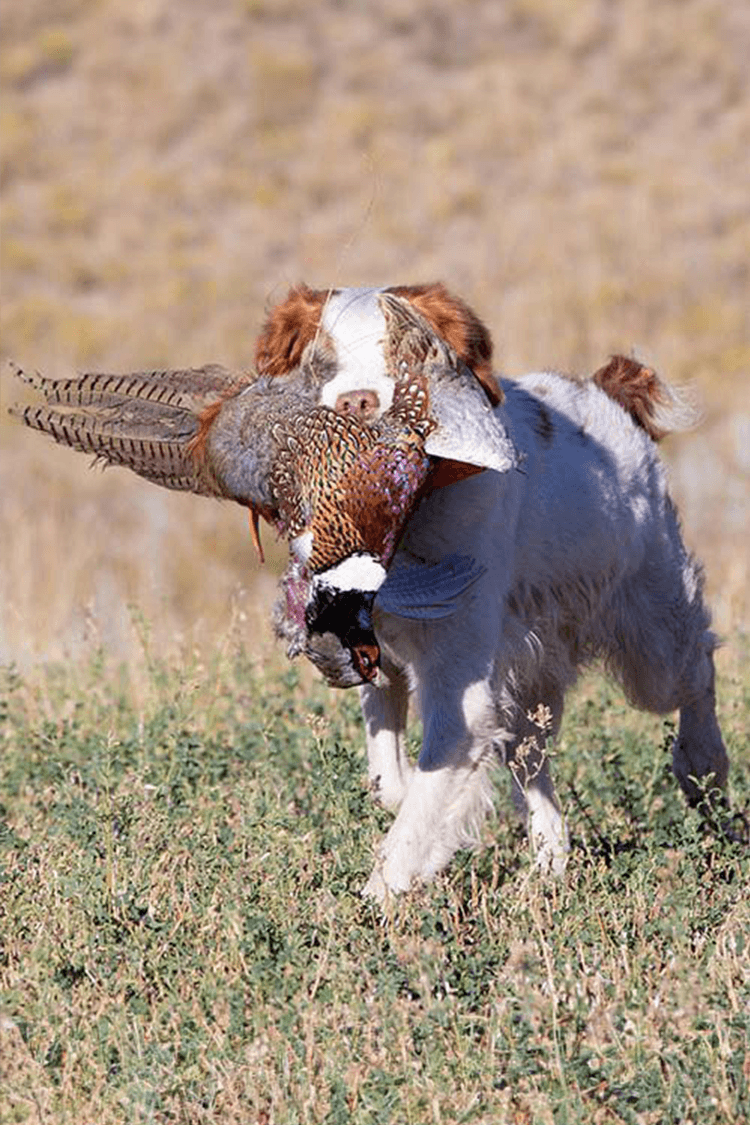
Sharp-Tail Grouse
Sharp-tails are well known for being an elusive bird that will flush at very long distances.
They are found in Conservation Reserve Program (CRP) fields, in edge cover along creek beds and in woody thickets, which Bighorn has in abundance.
In many areas, pheasant and sharp-tail habitats overlap, making bird identification difficult.
For experienced Bighorn bird hunting individuals, a sharp-tail can be distinguished from a hen pheasant by the prominent "chuck-chuk-chuk" sound emitted by a flushing grouse.
It is primarily a plant eater with some insect consumption in the fall including grasshoppers, crickets and beetles.
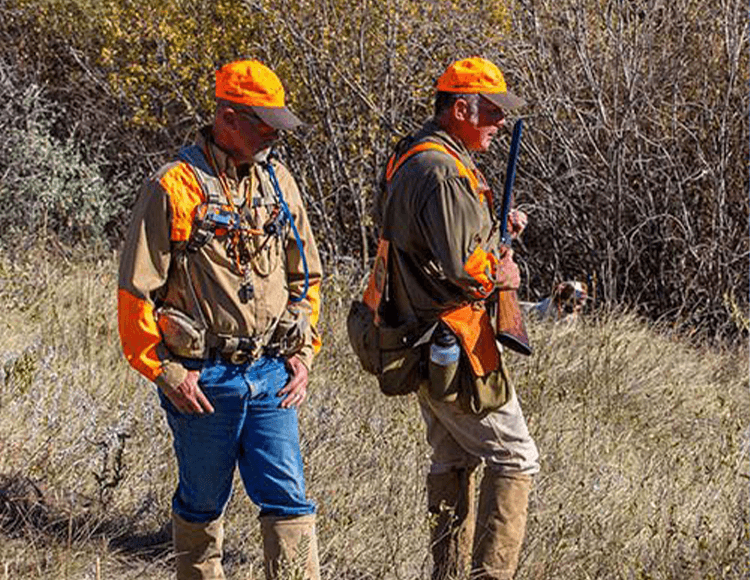
Hungarian Partridge
Also called the Hun or gray partridge, Hungarian Partridges are native to the bush plains of central Europe and western Asia.
It has been extensively relocated to many areas of North America, like Montana, after its initial introduction to the eastern seaboard states sometime in the 1870's.
During the years 1922 to 1926 the Montana Fish and Game Commission purchased 6,000 Huns in Europe and distributed them throughout the state, their presence in Bighorn bird hunting has grown vastly since then.
They may be found in:
- Grasslands
- Cultivated areas
- And open rangeland and in high mountain valleys
They nest on the ground in shallow depressions in the grass or low brush. Adult Huns weigh in at roughly 12 ounces and range from 12" to 14" in length.
Both sexes look very similar, but males have a horseshoe-shaped chestnut patch on the breast.
The primary color is gray in varying shades. Their sides are barred with dark chestnut, and the red-brown tail feathers are conspicuous when the birds are in flight.
Their primary diet consists of:
- Grains
- Seeds
- Leaves
- Berries
In the summer months they also eat large quantities of insects.
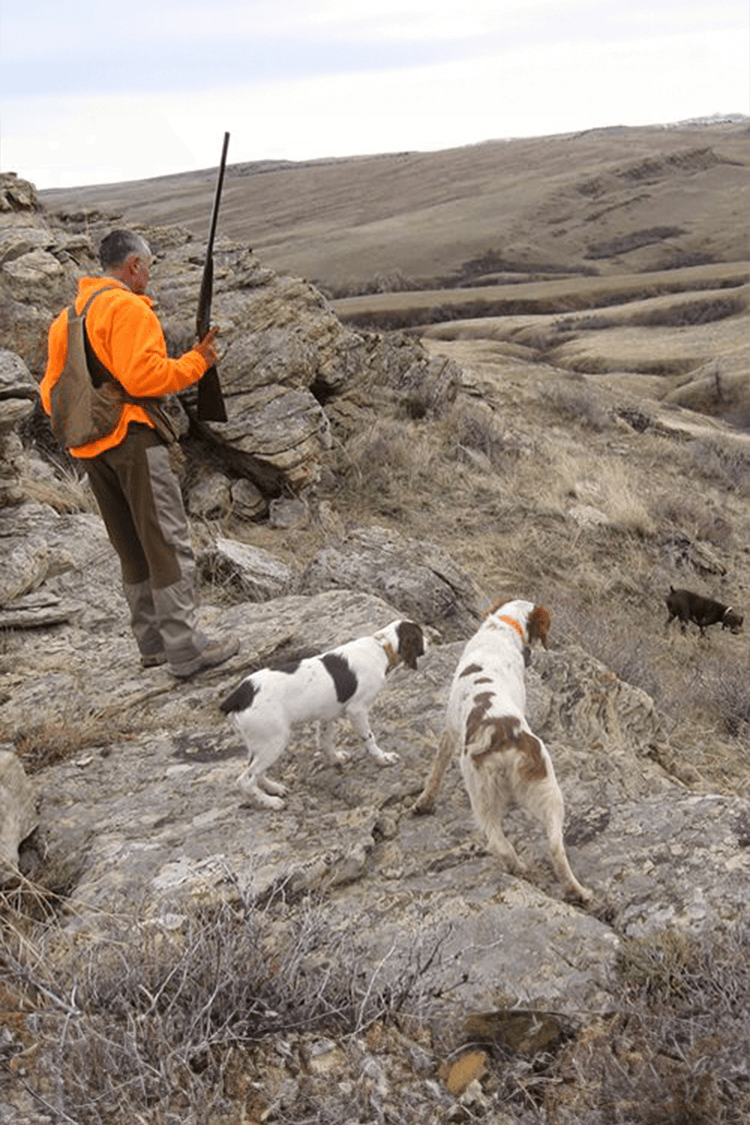
Cast & Blast
A Unique Offering, A Unparalleled Experience
While hunting & fishing in Montana, we offer a variety of packages that include a combination of hunting and fishing, the Cast and Blast is an altogether unique experience.
Getting Started: With the concentration on the waterfowl that is abundant on the Bighorn river, the typical “Cast and Blast” starts by getting out on the river and either “Jump Shooting” ducks and geese or if the birds are really moving then setting up with decoys is another favorite.
The Bighorn river offers plenty of opportunity for several species of waterfowl headed from Canada on their southern migration.
Perfectly positioning the drift boat for jump shooting is key as behind every bend and nook lends itself for some very exciting action.
Mid-Day Fishing: By mid day and the sun is high, the focus changes from shotgun to fly rod. This time of year lends itself to some amazing fishing.
The autumn brown trout are starting to stage up for the late fall spawn and they are eager for a fight.
Late Afternoon Hunt: As the sun starts to wain, the ducks start to return back to the river to roost.
It is at this time to change back to the shotgun again and start the late afternoon hunt.
Book Your Upland Bird Hunting Adventure at Forrester’s Bighorn River Resort Today
Forrester’s Bighorn River Resort stands out as a premier destination for upland bird hunting. We invite you to experience the thrill of hunting in the breathtaking landscapes of Montana. With our prime location, experienced guides, comfortable accommodations, and personalized service, we are committed to providing an unforgettable hunting adventure.
Contact us today to book your trip at our resort and discover the magic of Montana’s upland bird hunting.
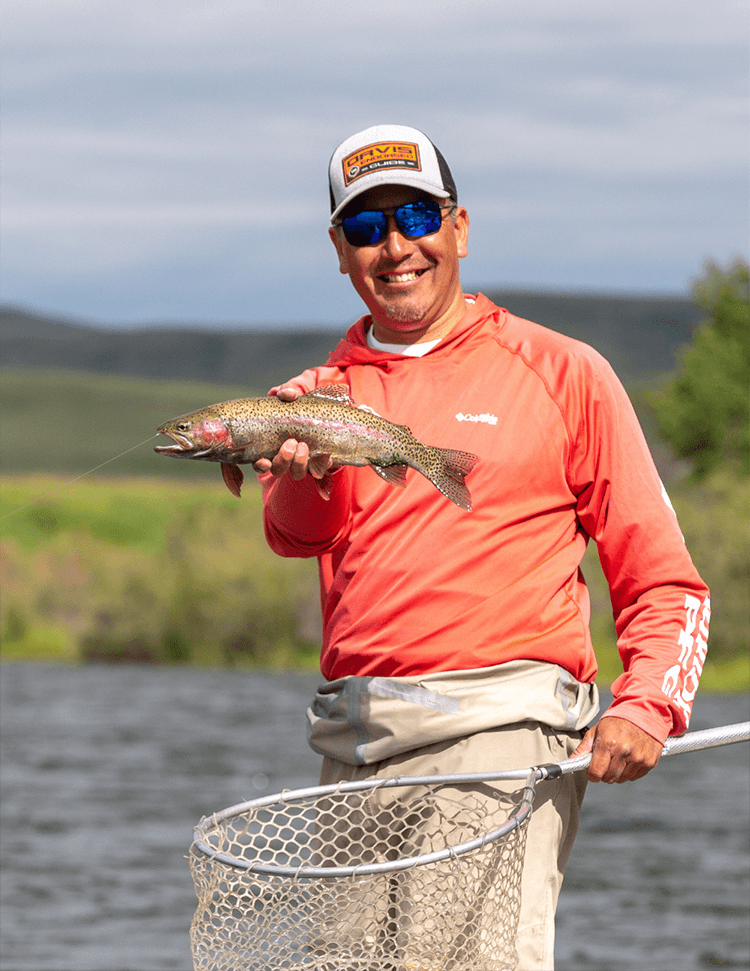

Where Every Moment is Exceptional
-
Unparalleled LuxuryExperience the epitome of luxury at Forrester's Bighorn River Resort, where every detail is meticulously curated to provide guests with a lavish and unforgettable retreat amidst the stunning landscapes of Montana.
-
Culinary ExcellenceIndulge in the finest cuisine at Forrester's Bighorn River Resort, where our expert chefs create culinary masterpieces using locally sourced ingredients, promising a gastronomic journey that delights the senses.
-
Tailored ExperiencesAt Forrester's Bighorn River Resort, we specialize in crafting personalized adventures, ensuring each guest enjoys tailored excursions tailored to their preferences and skill levels.
-
 The Bighorn River: An Angler's Paradise, Within ReachWith one of the largest concentrations of wild Browns and Rainbow trout in the west, the Bighorn River is not the kind of river to baffle all but the elite fishermen. Not to say these fish do not provide challenge, but alongside one of our Orvis-endorsed guides you are almost guaranteed a fair share of fly fishing photo ops.
The Bighorn River: An Angler's Paradise, Within ReachWith one of the largest concentrations of wild Browns and Rainbow trout in the west, the Bighorn River is not the kind of river to baffle all but the elite fishermen. Not to say these fish do not provide challenge, but alongside one of our Orvis-endorsed guides you are almost guaranteed a fair share of fly fishing photo ops. -
 The Bighorn Valley: Perfectly Suited For Epic HuntsThe drive into Forrester's Bighorn River Resort can set the mind racing. Every fold in the landscape looks to be perfectly suited for Montana bird hunting. And in this case, you will be pleased to discover, looks are not deceiving.
The Bighorn Valley: Perfectly Suited For Epic HuntsThe drive into Forrester's Bighorn River Resort can set the mind racing. Every fold in the landscape looks to be perfectly suited for Montana bird hunting. And in this case, you will be pleased to discover, looks are not deceiving.
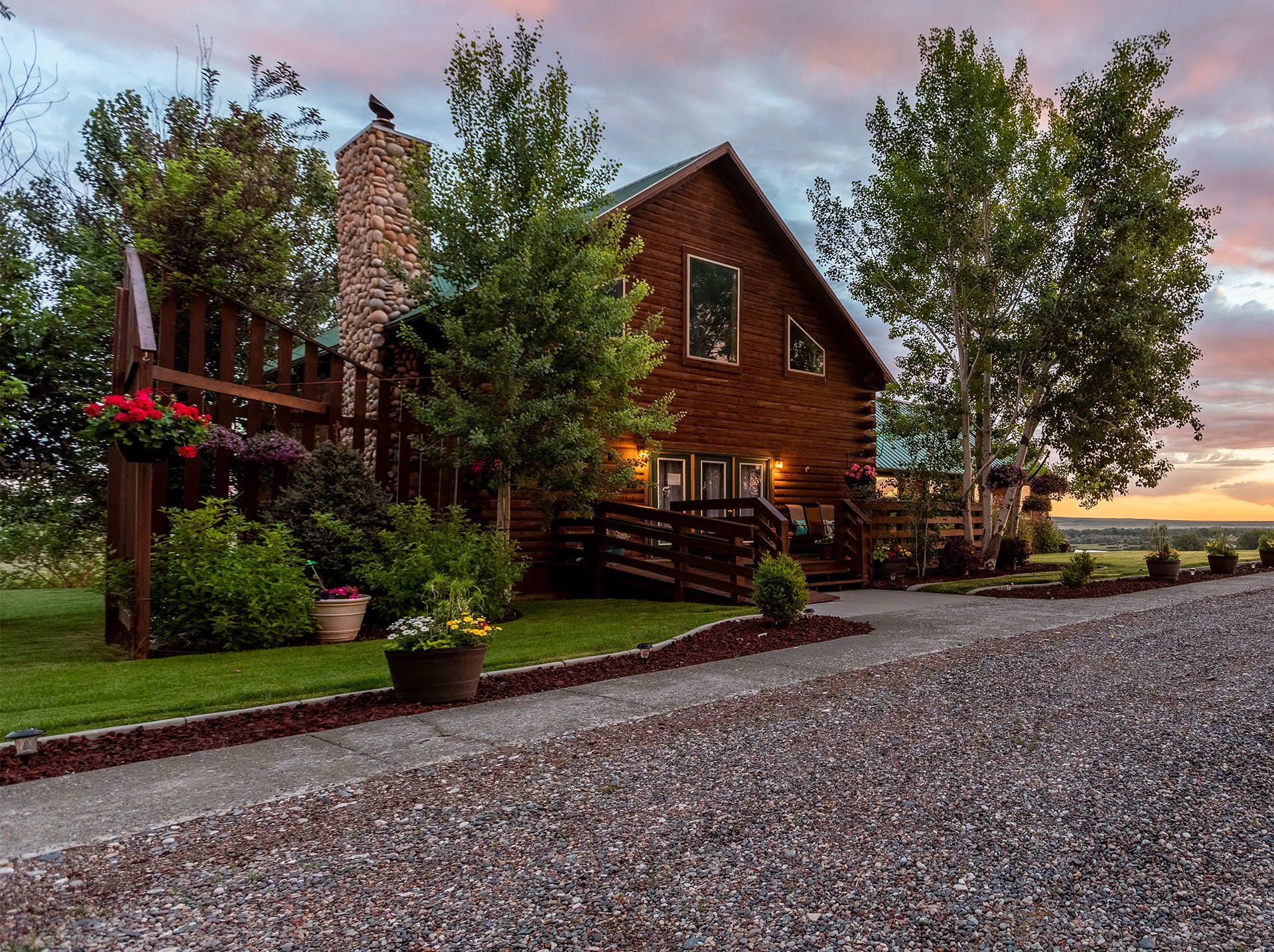

Book Your Stay
Visit our world-class Montana hunting & fishing lodge!
Forrester's Bighorn River Resort, perched above Montana's Bighorn River, offers unparalleled luxury hunting and fly fishing experiences amidst breathtaking vistas, private riverbanks, and deluxe accommodations, making it the ultimate destination for outdoor enthusiasts seeking unforgettable adventures in the untamed Montana foothills.

